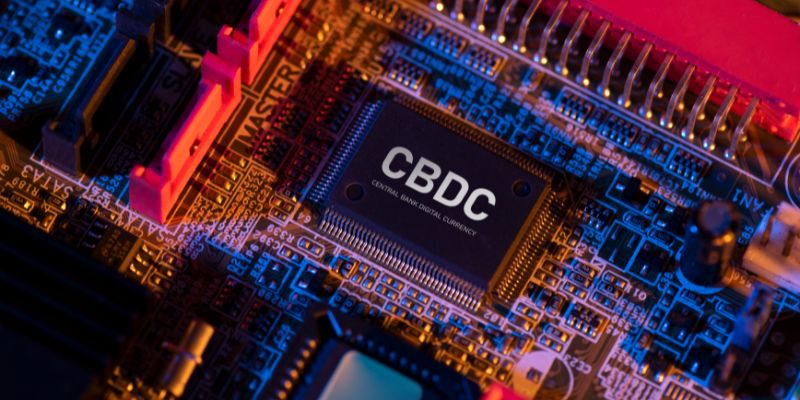Blockchain technology can be centralized if the control over its nodes is held by a single entity. Centralized blockchains are less common but do exist for specific use cases.
Blockchain is often synonymous with decentralization; its ledger maintained across multiple nodes ensures transparency and security. Despite this common association, not all blockchains are decentralized. Some organizations opt for centralized blockchains for greater control and efficiency, sacrificing the distributed nature for other benefits such as faster transactions and simplified decision-making processes.
These centralized systems, while counterintuitive to blockchain’s original intent, serve niche applications where the advantages of central oversight outweigh the need for widespread distribution. Understanding blockchain’s flexibility is crucial for businesses considering its applications across various industries.
The Essence Of Blockchain Technology
Blockchain technology is famous for its pioneering role in cryptocurrencies like Bitcoin. Core features define its unique nature. The main one is decentralization. This means it does not have a central point of control. Other features include transparency, immutability, and security. Decentralization in blockchain is essential. It spreads control across many computers.
This structure ensures all users have equal power. No single user controls the data or the network. It also makes the system less vulnerable to attacks and data manipulation. With strong encryption, data stays safe and unchangeable. The blockchain records are permanent. Once data is added, it cannot be changed or deleted. This is known as immutability. These features build trust amongst users. They ensure the system is fair and open for all.
Centralization Vs. Decentralization
Blockchain technology evolves through distinct forms. Centralized systems, like traditional banks, have one control point. This setup means a single authority makes all decisions. It can lead to swift policy changes and updates. These systems often feature high efficiency and easy management.
Decentralization changes this dynamic, offering multiple control points. This is key in blockchain networks. Such systems aim to eliminate single points of failure. They can also resist censorship while promoting equal power distribution. Users gain autonomy, enhancing trust.
| Traditional Centralized Systems | Benefits of Decentralization |
|---|---|
| Single authority control | Reduced risk of censorship |
| Fast decision-making | Shared decision-making control |
| Streamlined operations | Greater user autonomy |

Can Blockchain Be Centralized?
Blockchain technology often brings thoughts of decentralization. Decentralized networks are where no single entity holds control. But, centralization in blockchain is possible. It can happen through concentrated computing power or governance. Cryptocurrency mining pools illustrate this risk.
Hybrid blockchains offer an interesting solution. They blend private and public blockchain features. Thus, they achieve a balance between control and openness. Some permissions are centralized. Yet, the network retains some decentralized aspects.
Entities with governance roles can influence the hybrid’s protocols. Still, these blockchains can maintain transparency and security. They do so through public nodes validation. Hybrid blockchains mirror a middle ground approach. They show how blockchain’s nature isn’t fixed. It is adaptable to different needs and models.
Types Of Blockchain Structures
Public blockchains are open to everyone. They are transparent and secure. Anyone can join and they can see all the activities. Bitcoin and Ethereum are popular types of public blockchains. They use cryptography to keep data safe.
Private blockchains are not open to the public. They are like a VIP section. Only certain people can enter. Big companies often use them to keep things private and efficient.
Consortium blockchains are like a club with several managers. A group of organizations manages them. They are partly private and partly public. They give control to a group, not just one.
Centralized Control In Blockchains
The idea of blockchain brings to mind a system with no single boss. But, some blockchains are not like this. Instead, they have a set of rules controlled by a group. This group decides how the system works and makes changes.
Understanding who holds the power is key to knowing the system’s fairness. Big companies can sometimes have a lot of control. They do this by owning a lot of the system’s parts or by putting in more money. Their decisions then impact everyone in the system.
| Role of Governance | Influence of Major Players |
|---|---|
| Makes rules | They can change the system |
| Can update software | More control with more investment |
| Keeps everything running smoothly. | Affects smaller users |
Benefits Of Centralized Blockchains
Centralized blockchains offer high efficiency and speed in processing transactions. Traditional systems can be slow. But these blockchains work fast. This speed comes from fewer nodes to validate transactions. Fewer nodes mean faster consensus.
This sharp efficiency also simplifies complex operations. Businesses can rely on swift and smooth operations. These operations help companies grow. They also save time and money.
The design of centralized blockchains fits well with current regulatory frameworks. This is vital for business adoption. Companies need to follow rules. Centralized blockchains make compliance easier. They provide clear control over data. This control helps in following laws.
Criticism And Concerns
Blockchain technology often boasts strong security. Yet, experts point out several vulnerabilities. These can lead to hacks and loss of funds. Smart contracts, which are automated agreements, can contain flaws. Attackers exploit these flaws. This can cause immense damage within decentralized networks.
The potential for abuse also raises serious concerns. Centralizing a blockchain can give too much power to a single entity. This goes against the core principles of decentralization. With centralization, the entity could alter transactions. They could even censor or reverse them. Such actions can undermine trust in the system.
Decentralized blockchains must be vigilant. They should improve protocols constantly. This guards against both external threats and power concentration. Transparency in operations is crucial. It ensures that users maintain control over their assets.
Real-world Examples
Centralized blockchain solutions are no longer a contradiction in terms. Consider the digital Yuan, China’s answer to a centralized digital currency. It leverages blockchain-like technology under government control. Similarly, private corporations have dipped their toes, with Facebook’s initiative for a digital currency, Libra (now Diem), attempting to blend centralized oversight with a decentralized ledger.
These examples showcase a subtle blend. They operate within a controlled environment while utilizing aspects of blockchain’s decentralized principles. This adaptation aims to harness blockchain’s potential for security and transparency while maintaining a stronghold over regulatory and internal processes. Innovation is key in these centralized blockchain solutions, leading to unique frameworks that challenge the traditional blockchain narrative.
The Future Of Blockchain
Blockchain technology often sparks debates on centralization. Most blockchains are decentralized networks. Yet, some companies are creating centralized blockchains. These are different from the typical models that Bitcoin and Ethereum use. A centralized blockchain keeps control with a single entity or group.
New trends are showing a mix of both worlds. Distributed ledger technologies (DLT) still offer a decentralized way of recording data. But, some parts may be controlled by central authorities. This mix can offer more trust in certain situations. Big businesses and some governments show interest in this balanced approach. They can set rules and have more say in how the technology runs. Still, people can see all records, which makes the process open.
This blend keeps the core idea of blockchain. It means no one has too much power. But, it can also mean faster and more efficient systems. Experts are keeping an eye on how this balance will shape the future of blockchain.
Frequently Asked Questions On Can Blockchain Be Centralized
Can Blockchain Be Inherently Centralized?
Blockchain technology is often associated with decentralization. However, it can be centralized if the control over its nodes is held by a single entity.
How Does Centralized Blockchain Differ?
A centralized blockchain has a controlling authority, unlike its decentralized counterpart. This authority oversees the network operations, which can impact transparency and security.
What Are The Benefits Of Centralized Blockchain?
Centralized blockchains offer faster transactions and easier governance. This makes them practical for businesses needing efficiency and control over their blockchain solutions.
Are All Cryptocurrencies On Centralized Blockchains?
Not all cryptocurrencies operate on centralized blockchains. Many, like Bitcoin and Ethereum, are built on decentralized networks, preventing control by a single entity.
Conclusion
Exploring the potential for centralized blockchain has led us to a complex terrain. It reveals that, while blockchain thrives on decentralization, certain applications may benefit from centralized features. This delicate balance reflects innovation’s ability to adapt and transform. As the blockchain landscape evolves, the centralization debate will continue to spark diverse, cutting-edge solutions.

